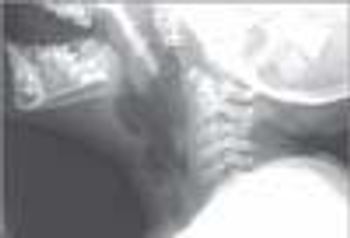
Hoarseness developed in a 27-month-old girl who was previously treated in the ED for a presumed asthma exacerbation and bronchiolitis.

Hoarseness developed in a 27-month-old girl who was previously treated in the ED for a presumed asthma exacerbation and bronchiolitis.

Practicing pediatricians commonlytalk with patients and parentsabout medical risks. Examples of suchrisks include those of a newborn havinga genetic disease, of a complication of anillness developing, and of a patient experiencingan adverse effect from a medicationor vaccine. Different ways of expressingand communicating risk mayhelp patients and parents understand themagnitude of a risk and make informed,thoughtful decisions about their medicalcare. It is important to be aware of theinfluence personal experience and concernshave on how risk is perceived andto recognize how the choice of a particularway of framing a risk may inadvertentlycommunicate a clinician's personalbiases in a situation.

When I was growing up in Brooklyn in the 1950s, kids started their preparations for Halloween after dinner on October 31. We would find an old mask, or make one out of a paper bag; wealthier kids might buy one. I would grab a pillowcase to hold my "loot" and take off. Neighbors would give us store-bought candy or homemade cookies or cupcakes. It didn't occur to anyone that an unwrapped, unsealed item could be dangerous. Older kids were the real danger: they would steal our goodies and often beat us up.

For the past few weeks, a 10-year-old boy had a pruritic abdominal rash that had not responded to over-the-counter topical medications. The rash had appeared around the time he started wearing a new belt (shown). The child was otherwise healthy. There was a family history of asthma.

In the newborn nursery, pediatricians commonly encounter infants born to mothers who were receiving selective serotonin reuptake inhibitors (SSRIs) for depression during pregnancy. Earlier studies suggested a number of potential effects of maternal SSRI use on the newborn; these included jitteriness, agitation, diarrhea, hypoglycemia, vomiting, hypothermia, respiratory distress, seizures, feeding difficulties, increased or decreased tone, low birth weight, and small size for gestational age.1

It is estimated that 12% of clinical methicillin-resistant Staphylococcus aureus (MRSA) infections are now community- associated.1 To combat the rising incidence of such infections, last month the CDC launched a new national campaign.

I read with keen interest Dr Jack Gladstein's article, "Pediatric Migraine: Strategies for Maintaining Control," in the August issue of CONSULTANT FOR PEDIATRICIANS (page 316). It prompted several follow-up questions, which I hope the author can respond to.

This 9-year-old girl has extensive psoriasis and is currently receiving narrowband UVB phototherapy for her body plaques. Her mother has insisted on covering her daughter's face during treatment and on having the girl use sunscreen on her face whenever she is outdoors to prevent premature aging.

This 14-year-old boy with autism presented with sudden visual loss in the right eye. For a week, the eye had been red, irritated, and painful. Three days earlier, "a white bubble" had developed on the cornea and had begun to obscure his vision.

A previously healthy 16-month-old boy was hospitalized because of vomiting of 10 days' duration, fever of 4 days' duration (temperature up to 38.6°C [101.4°F]), and watery diarrhea. He also had had a maculopapular rash, which resolved the day before presentation. Family history was unremarkable.

A 16-year-old boy presented for evaluation of asthma and exercise-induced bronchospasm. His parents recalled an episode 2 months earlier in which the patient, while jumping on a trampoline and wrestling with his brother, felt like he could not catch his breath. He took a puff of his rescue inhaler, and soon after, passed out. He remained unresponsive for 2 hours.

Two-month-old boy with divot in the lower back, shown here with the gluteal crease relaxed (A) and spread (B). Infant is a product of an uncomplicated pregnancy and delivery. Nursery stay uneventful. Subsequent feeding and growth normal. Parents report no problems with urination or defecation.